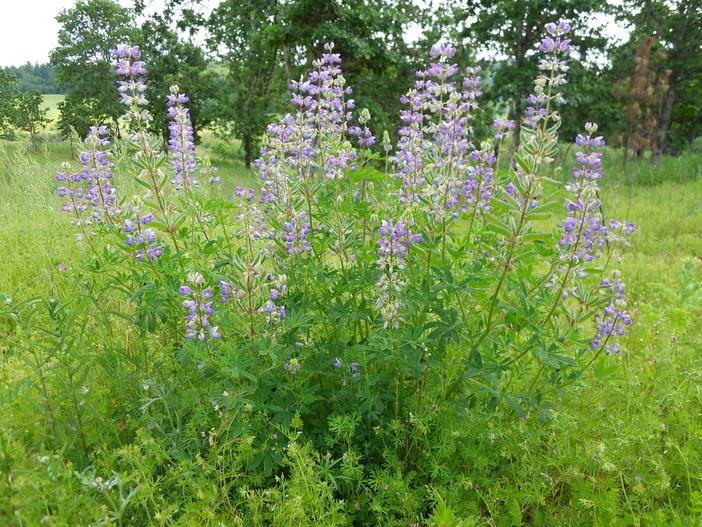Sicklekeel Lupine
(Lupinus albicaulis)
Sicklekeel Lupine (Lupinus albicaulis)
/
/

Willamette Biology
CC BY-SA 2.0
Image By:
Willamette Biology
Recorded By:
Copyright:
CC BY-SA 2.0
Copyright Notice:
Photo by: Willamette Biology | License Type: CC BY-SA 2.0 | License URL: https://creativecommons.org/licenses/by-sa/2.0/ | Uploader: Willamette Biology | Publisher: Flickr




Estimated Native Range
Summary
Lupinus albicaulis, commonly known as Sicklekeel Lupine, is an evergreen perennial herb native to the Pacific Northwest, particularly found in open woodlands, meadows, and prairies. It often exceeds a meter in height and is characterized by its palmate leaves and tall, showy inflorescences. The inflorescence, reaching up to 44 centimeters (17 inches) in length, bears whorls of flowers each 1 to 1.6 centimeters (1/3 to 2/3 inch) long. The flowers range in color from purple to yellowish or whitish and are notable for their sickle-shaped keel, which gives the plant its common name.
Sicklekeel Lupine is valued for its ornamental flowers, which bloom in late spring to early summer, and its ability to fix nitrogen in the soil, improving soil fertility. It is used in reforestation and revegetation projects, especially for stabilizing roadsides and other disturbed habitats. This lupine thrives in full sun but can tolerate partial shade and requires low to medium amounts of water, making it suitable for xeriscaping. It prefers well-drained soils and can adapt to a range of soil types. While generally low-maintenance, it can be susceptible to fungal diseases and aphid infestations. Gardeners should also be aware that Lupinus species can be toxic to livestock and pets if ingested.CC BY-SA 4.0
Sicklekeel Lupine is valued for its ornamental flowers, which bloom in late spring to early summer, and its ability to fix nitrogen in the soil, improving soil fertility. It is used in reforestation and revegetation projects, especially for stabilizing roadsides and other disturbed habitats. This lupine thrives in full sun but can tolerate partial shade and requires low to medium amounts of water, making it suitable for xeriscaping. It prefers well-drained soils and can adapt to a range of soil types. While generally low-maintenance, it can be susceptible to fungal diseases and aphid infestations. Gardeners should also be aware that Lupinus species can be toxic to livestock and pets if ingested.CC BY-SA 4.0
Plant Description
- Plant Type: Herb
- Height: 2-5 feet
- Width: 2-3 feet
- Growth Rate: Moderate
- Flower Color: Purple, White
- Flowering Season: Spring, Summer
- Leaf Retention: Evergreen
Growth Requirements
- Sun: Full Sun, Part Shade
- Water: Low, Medium
- Drainage: Medium
Common Uses
Bee Garden, Bird Garden, Butterfly Garden, Deer Resistant, Drought Tolerant, Hummingbird Garden, Low Maintenance, Rabbit Resistant, Showy Flowers
Natural Habitat
native to the Pacific Northwest, particularly found in open woodlands, meadows, and prairies
Other Names
Common Names: Sickle-Keel Lupine, Pine Lupine
Scientific Names: , Lupinus albicaulis,
GBIF Accepted Name: Lupinus albicaulis Douglas